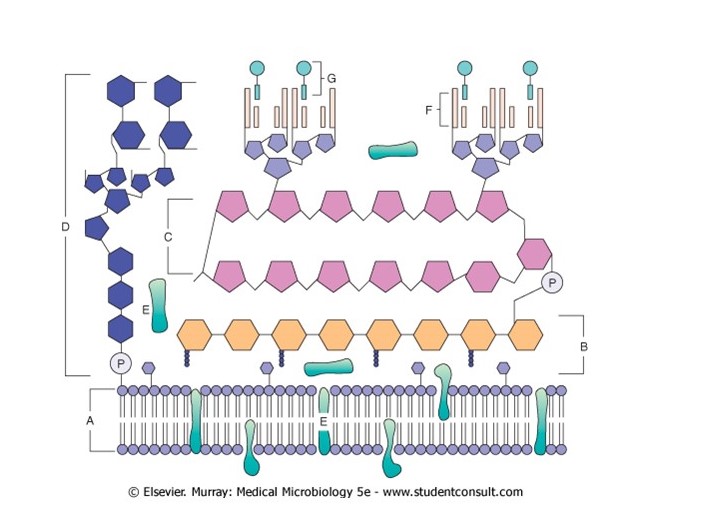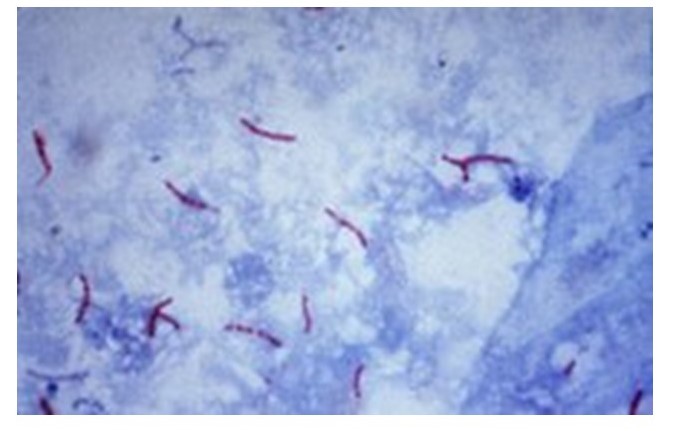43 Differential stains - acid-fast staining
43.1 Acid-fast stains
Certain microorganisms, in particular mycobacteria, have cell walls that contain waxy mycolic acids (Figure 43.1). These cell wall structures resist Gram staining, but have the power to retain specific stains even when they are decolourised by mineral acids. They are therefore referred to as being “acid-fast”. Most other bacteria lack mycolic acids in their cell wall, and are therefore non-acid fast.

This staining process uses a red/pink dye called carbol fuchsin, and so acid-fast bacteria appear red/pink (Figure 43.2). Non-acidfast bacteria will not be able to retain the carbol fuchsin stain, and so will be coloured by the counterstain (usually methylene blue or malachite green).

Therefore, in this lab, you will use an acid-fast stain, also known as a Ziehl-Neelsen stain, to determine whether the infectious agent in Case Study 7 is a mycobacterium or not.